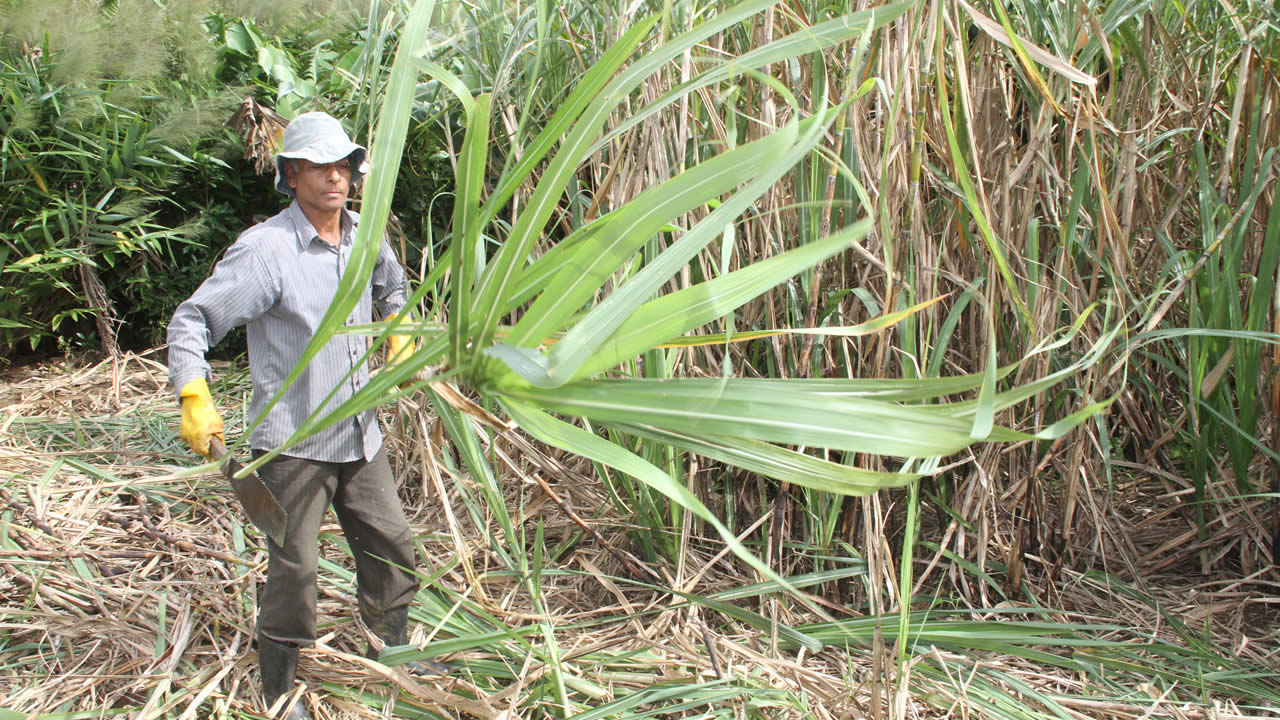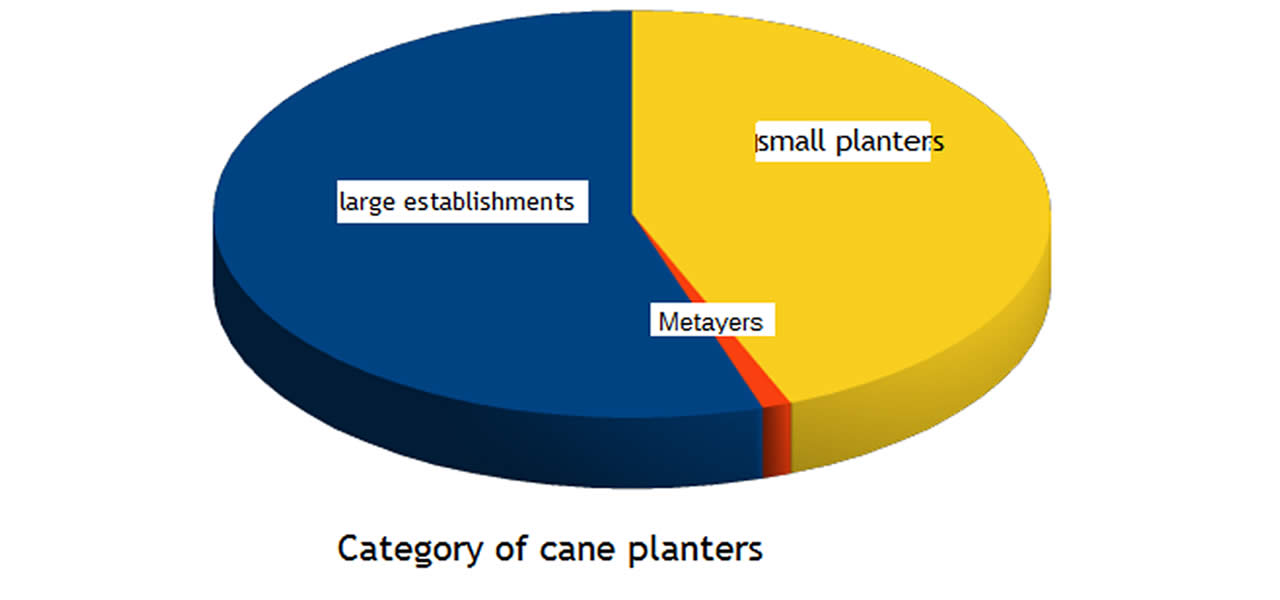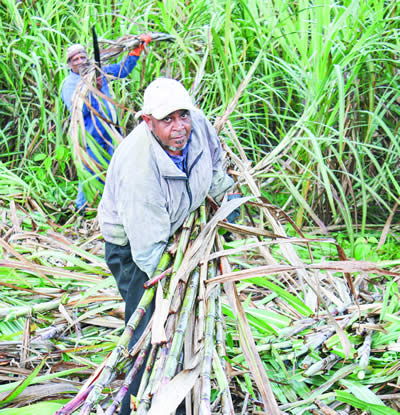
From a production of 570,000 tons in 2004 to 355,000 tons in 2017, the sugar industry continues to experience a declining trend that affects mainly small cane planters. As overall income is insufficient to cover costs, many farmers are being forced to abandon their crops. But the hope of a better tomorrow still lingers, especially with the emergence of new markets for sugar export, for example China. Is the industry sustainable?
The abolition of European quotas and the liberalisation of the sugar market, the spectre of Brexit, the continuous decline in the price of sugar on the world market, the rising production costs in Mauritius, the ageing of the sugar industry workforce, a low mechanisation, these are some of the ills currently affecting an industry which was once the backbone of our economy. But there is also hope. For example, Mauritius’s request to export 50,000 tons of specialty sugars to China has been readily accepted during the recent mission of the Prime Minister to China. But will this improve the fate of our small planters?
Although things are not really rosy in the sugar industry, the sector still boasts of a bright future ahead, because, despite a fall in the price of sugar and the erosion of traditional markets, new markets are opening up. After China, the authorities intend to contemplate other horizons. But can we really stabilise our production, which is on a decline? The land area under sugarcane cultivation has fallen from 71,580 hectares in 2005 to less than 56,000 hectares in 2016. This is mainly due to the massive conversion of agricultural land for residential, commercial or industrial purposes. On the other hand, the estimate for sugar production for the year 2018 has been revised downwards by the Mauritius Chamber of Agriculture, from 350,000 tons to 330,000 tons. It is said the harvest will likely be affected by the climatic fluctuations felt in Mauritius at the beginning of this year, but also because of a huge loss caused by fire in sugarcane fields. It is estimated that nearly 82,000 tons of sugarcane have been burnt this year. A drop in cane production also has a negative impact on the volume of bagasse available, which in turn affects the energy sector. To make up for the lack of bagasse, thermal power plants must have recourse to coal, which has an environmental impact.
It should be noted that the sugar sector contributes about 0.5% to Gross Domestic Product (the whole agricultural sector contributes around 3.3%). Apart from raw sugar, Mauritius exports 120,000 tons of special sugars to 40 countries, including 20 in the European Union. Other countries include the United States, Canada, the Middle East, Australia and Eastern Europe.


Kreepalloo Sunghoon : “A higher income will solve all problems”
Kreepalloo Sunghoon, secretary of the Small Planters’ Association (SPA), relates to us the major problems faced by small farmers. According to him, the biggest issue of the sector is the low revenue per ton of sugarcane sent for milling. “Revenues exceed production costs. If we can get higher revenues, we will solve all the other problems,” says Kreepalloo Sunghoon. He explains that small growers have trouble paying for labour or incurring other expenses. Faced with this situation, some planters are forced to simply abandon the harvest. “The money the planter receives will not be enough to pay the workers and the transport costs. It’s more economical to abandon the field. But planters would make huge losses.”
So how do we solve the problem? Kreepalloo Sunghoon believes that the sugar industry has the capacity to pay farmers more than the current rate. “If only government takes its responsibilities and makes the right decision!” He indicates that in Reunion, small planters get about Rs 3,500 per ton of sugarcane, while in Mauritius one barely receives Rs 1,100. The costs amount to nearly Rs 1,900. The Association has already submitted a memorandum to the government to explain the situation. “We are only asking for what we rightly deserve,” adds the secretary of the Association. The planters cannot continue to lose Rs 800 per ton of cane produced, after putting so much effort.
This explains why nearly 28,000 acres of arable farming land have been abandoned. Regarding the workforce, he says that labourers do not want to work for peanuts, but if they are paid decent wages, they will work. “There is not really a shortage of labour, but rather an inability to pay. The Association is touring all villages to meet small planters of the island and is inviting them to join together for a common cause to fight for their interests. We also need to see how to integrate other sectors because we cannot continue to abandon our lands.”
Rs 2,500 per ton claimed
Small planters have been asking for a payment of Rs 2,000 per ton of sugarcane supplied if the millers will collect directly from the fields, or Rs 2,500 per ton if planters arrange to deliver their cane to the millers.

 Eric Ng : “A temporary relief”
Eric Ng : “A temporary relief”
Economist Eric Ng says the measures proposed by the government to come to the rescue of small planters offer temporary relief. We need to work out more structured and durable solutions. “The proposed payments will act as a placebo. They will provide a temporary relief. Long term solutions include finding new markets for sugar, diversify agricultural activities and review bagasse price.” He is of the view that if the payments are from taxpayers’ money, then this is not a sustainable solution, as someone has to pay for it. If it is from the Sugar Insurance Fund Board, then it is a relief measure.
 Arvind Nilmadhub : “Time to rethink sugar sector strategies”
Arvind Nilmadhub : “Time to rethink sugar sector strategies”
Economist Arvind Nilmadhub, commenting on the government’s decision to offer financial support to small planters, says that the relief provided by the government is welcomed and this will alleviate the burden of small sugarcane planters. “However, this is only a short term solution. The Government and small sugarcane planters should rethink of strategies as to how to maximise their revenue with the land available, for example through diversification of activities and vertical farming.”
Salil Roy : “We already know the problems, we await the solutions”
The president of the Planters’ Reform Association (PRA), Salil Roy, agrees with Kreepalloo Sunghoon that the price per ton of sugarcane is clearly insufficient to cover labour, transport and other production costs. Commenting on the measures announced by the government, Salil Roy says he is satisfied with them, as it comes as a major relief at an opportune time.
However, he hopes the government will now work on long term solutions. He expects the Prime Minister to soon call all stakeholders for further consultation.“Small planters are being forced to abandon the cultivation of sugarcane. Many planters cannot harvest because of lack of resources as the costs are too high.” His Association has already submitted a memorandum to the government asking for long term structured measures to improve the situation. “Planters have to abide by a work schedule. There is a time for planting, another for fertilizer application and a time for harvest. Planters must follow the steps in sequence. The authorities must understand this. You cannot take so much time to analyse the situation and come up with solutions.” Salil Roy concludes that everyone already knows what the problems are, so we only need to work out solutions.
 JNP rallies all workers
JNP rallies all workers
Workers of the sugar industry are also looking forward to better working conditions. The Joint Negotiating Panel (JNP) has invited all labourers and artisans of the sugar industry to a meeting at the Rabita Hall in Port Louis on 7 October 2018. Members of the JNP, who met the press on Wednesday, have spoken against the recommendations of the report of the Joint Technical Committee.
Ashok Subron, spokesman of the JNP, claims that the acquired rights of workers cannot be compromised and we cannot favour rich companies to the detriment of workers. He warned the government not to provide any incentives to sugar producers as the large groups are already benefiting from various fiscal concessions, such as the Smart Cities projects.
Sugar on Cabinet menu
The Cabinet, last Friday, announced new measures to ease the burden of small farmers. The ministerial committee set up to look into the issues affecting the sector and the proposals from stakeholders presented its recommendations to Cabinet. The government has agreed to provide support to sugarcane planters who are facing financial difficulties due to the decline in sugar price on the world market. The following measures have been proposed for providing immediate relief to planters for Crop 2018: (a) a cash compensation of Rs1,250 per ton of sugar to all planters; and (b) additional remuneration from bagasse of Rs1,250 per ton of sugar thus bringing the revenue accruing from bagasse to Rs2,500 for small planters and Rs1,700 for other planters. For planters with less than 100 hectares of cane cultivation, the advance of 80% would be extended on all the revenue received from sugar and co-products instead of the ex MSS price on sugar only. The Mauritius Cane Industry Authority would also assist planters with less than 100 hectares under cane cultivation through an advance from the Planters Fund for the purchase of fertilizers for crop 2019. The advance would be around Rs13,000 per hectare. Government stated it will continue to explore new markets for sugar, in particular special sugar, with remunerative prices. In this respect, after protracted negotiations with the Chinese authorities under the Mauritius China Free Trade Agreement, Mauritius has managed to obtain a tariff rate quota of 50,000 tons of special sugar.









